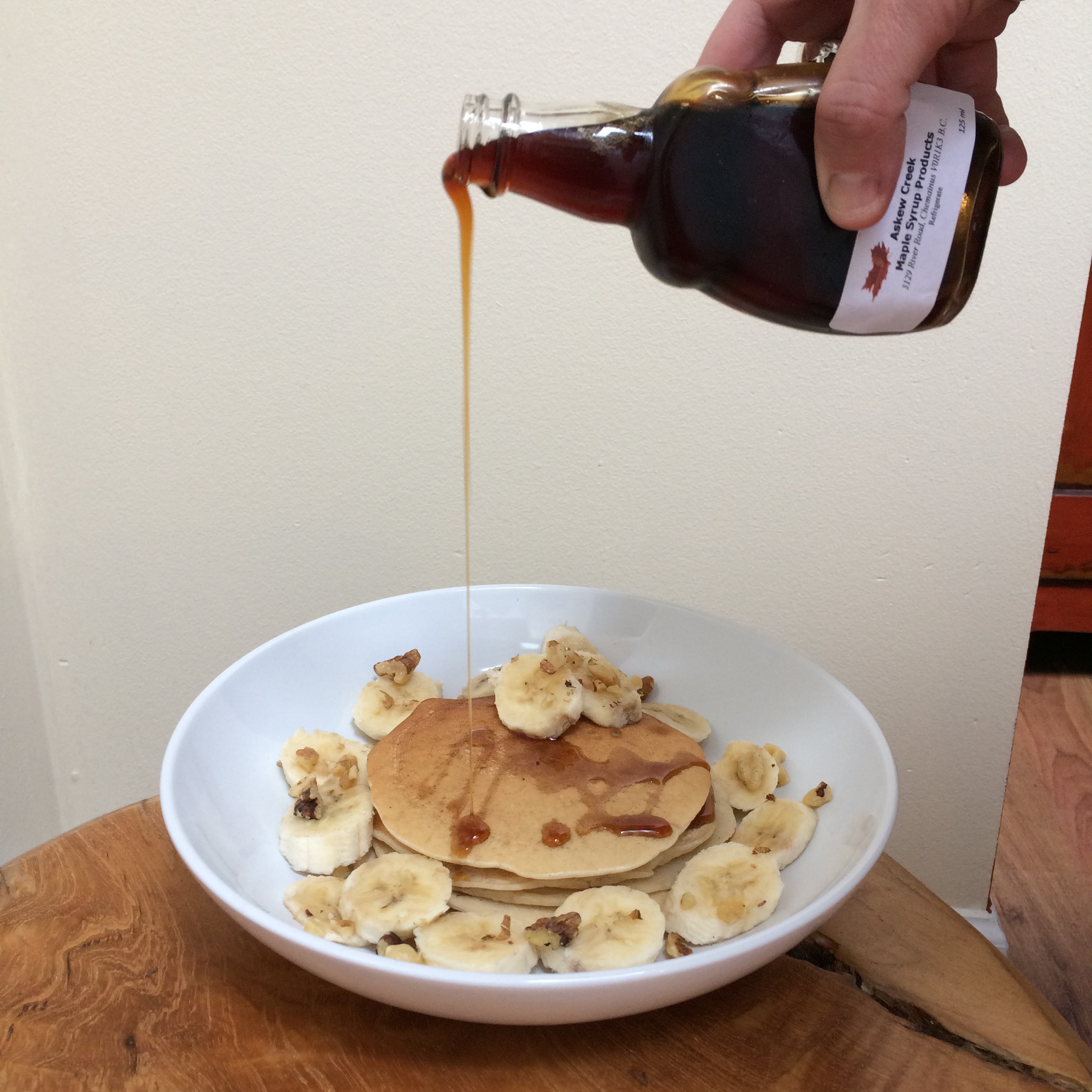Full disclaimer: This is a very Canadian post.
I love maple syrup. I put it on everything that makes possible sense: pancakes, waffles, french toast, but I also include in most of my baking as well as to marinate tofu and tempeh. I use it in sauces, dips and dressings and I don’t think I could bake or cook without it. I’ll admit that it tastes so delicious I could literally drink it (okay, it is THAT GOOD eh) and I am definitely guilty of sneaking a small spoonful of maple butter every once in a while. So once I heard about a festival celebrating maple syrup and tasting local flavours, I was there!

This Maple Syrup is Pure Gold
In a nutshell, maple syrup comes from maple trees (I know…duh) and in Canada, most distribution is from the East, mainly Quebec. I live on the other end of Canada on Vancouver Island where surprisingly enough maple sap can be tapped from the Bigleaf Maple trees. Tapping is done from November to March or until budding occurs. This kind of blew my mind, I never heard of local maple syrup before, but how would it compare in taste? More on that below (spoiler…it is freaking delicious).
We attended a basic tapping demonstration where our guide Louie walked us through the forest to his favourite sap giving tree. He drilled a hole on an angle and inserted a spile and after seconds, sap was dripping. We were able to taste it, but since it is only 2% sugar, we had to use our imaginations to taste the sweetness.

Louie – Our Sapsucker
Louie connected the spile to a hose that fed directly to a tightly closed bucket in order to prevent rainwater and insects from mixing with the maple sap. The sap is also known on the market as maple water and it contains amino acids, antioxidants and electrolytes. I find the taste very subtle and it could certainly be substituted for water in cooking or for tea and coffee, but it’s not the cheapest option. It’s also a perfect swap for coconut water if that’s not your thing.
One litre of maple syrup requires 43 litres of maple sap (at 2% sugar). Most maple tree commercial farms are in Quebec where they can meet these demands whereas a recreational maple tree farmer like Louie will be happy to produce 30 litres of maple syrup a season.
We were then shown the process of boiling down the maple sap via an outdoors evaporator. Once the sugar level reaches 66.7%, it needs to be strained and voila, you have maple syrup!

The Wood Burning Evaporator
It was a wonderful experience. It felt very communal and truly something that everyone was proud to be a part of which led to everyone’s favourite moment: the taste testing. I tried 4 different local maple syrups and it was impressive how unique each tasted; some were lighter or golden, others tasted very similar to molasses and the best had the perfect blend of sweetness and woodiness.
I choose a maple syrup that was darker than the other varieties and was tapped just last month from Askew Creek, BC. Pouring it over my pancakes this morning has been the highlight of my Sunday–so good in fact, I definitely licked my plate clean.
There were other fun little activities that were held over the weekend including a train ride that provided us with one of the most stunning views of frozen water (see below) as well as workshops on how to cook with maple syrup and live music.

Gorgeous View
Do you like maple syrup as much as I do? Let me know in the comments what is your favourite way to use maple syrup in the kitchen 🙂


As a Quebecer I obviously love maple syrup. I’m so glad I have access to good maple syrup all year long. I can’t say what my favorite use is, there’s too many!
Lucky you! You’re so right, there are so many ways to use maple syrup —both sweet and savory. Sweet is my fave 😉
This sounds awesome! So much better than the “local” Baltimore King’s Syrup haha
Haha, I even had to look that up and sad to see it’s made from corn syrup ;( Perhaps the one time eating local isn’t recommended… lol